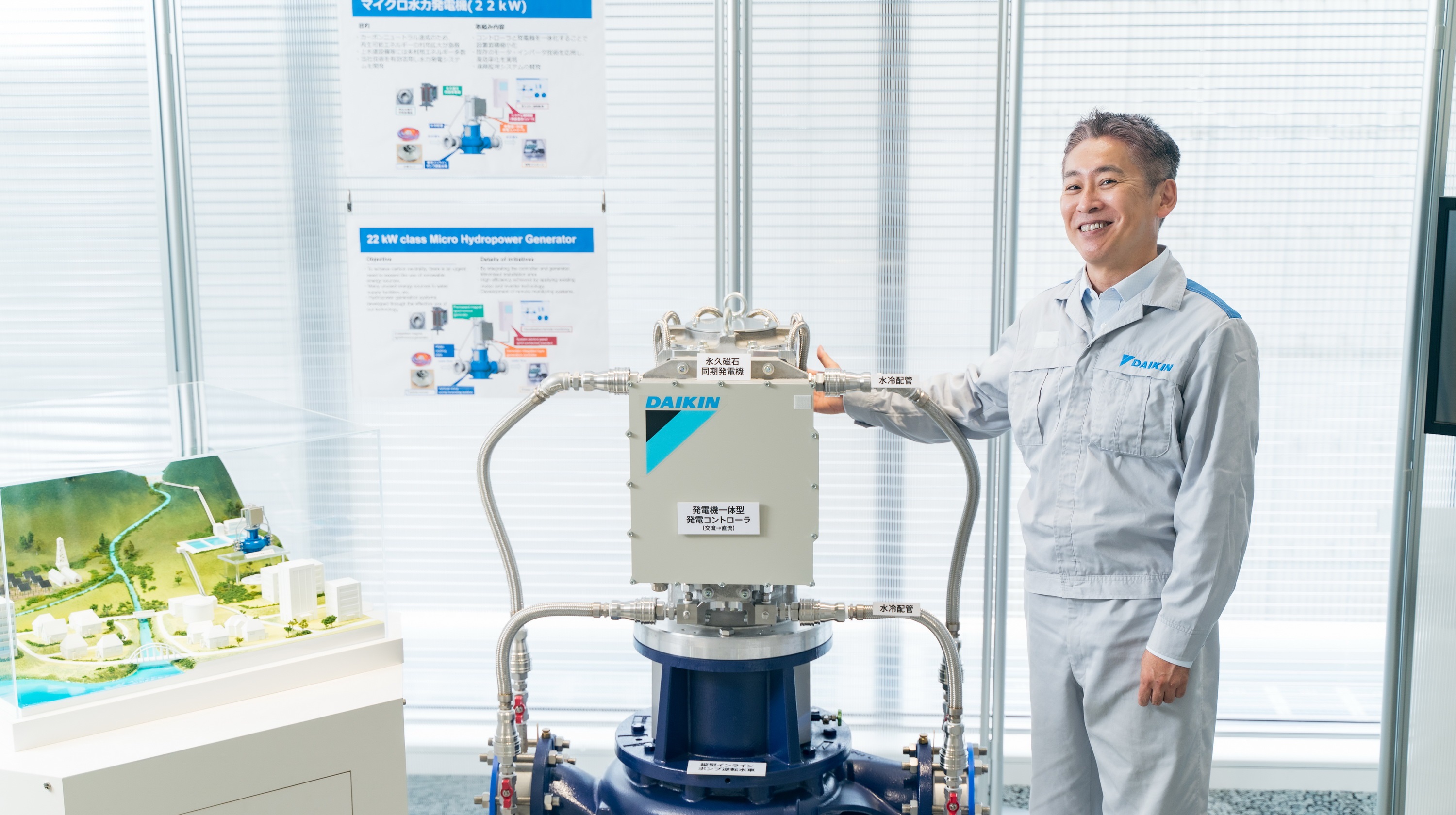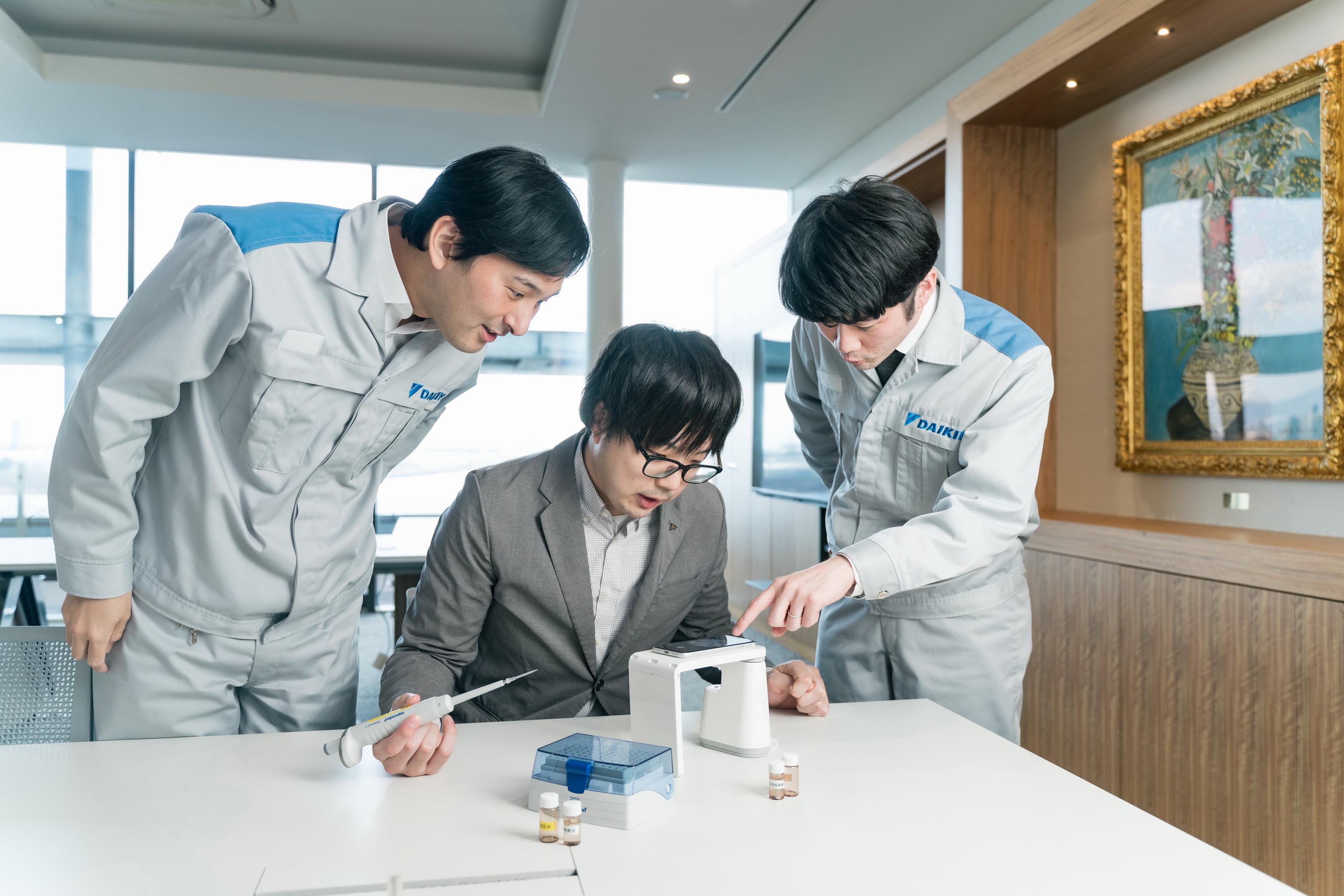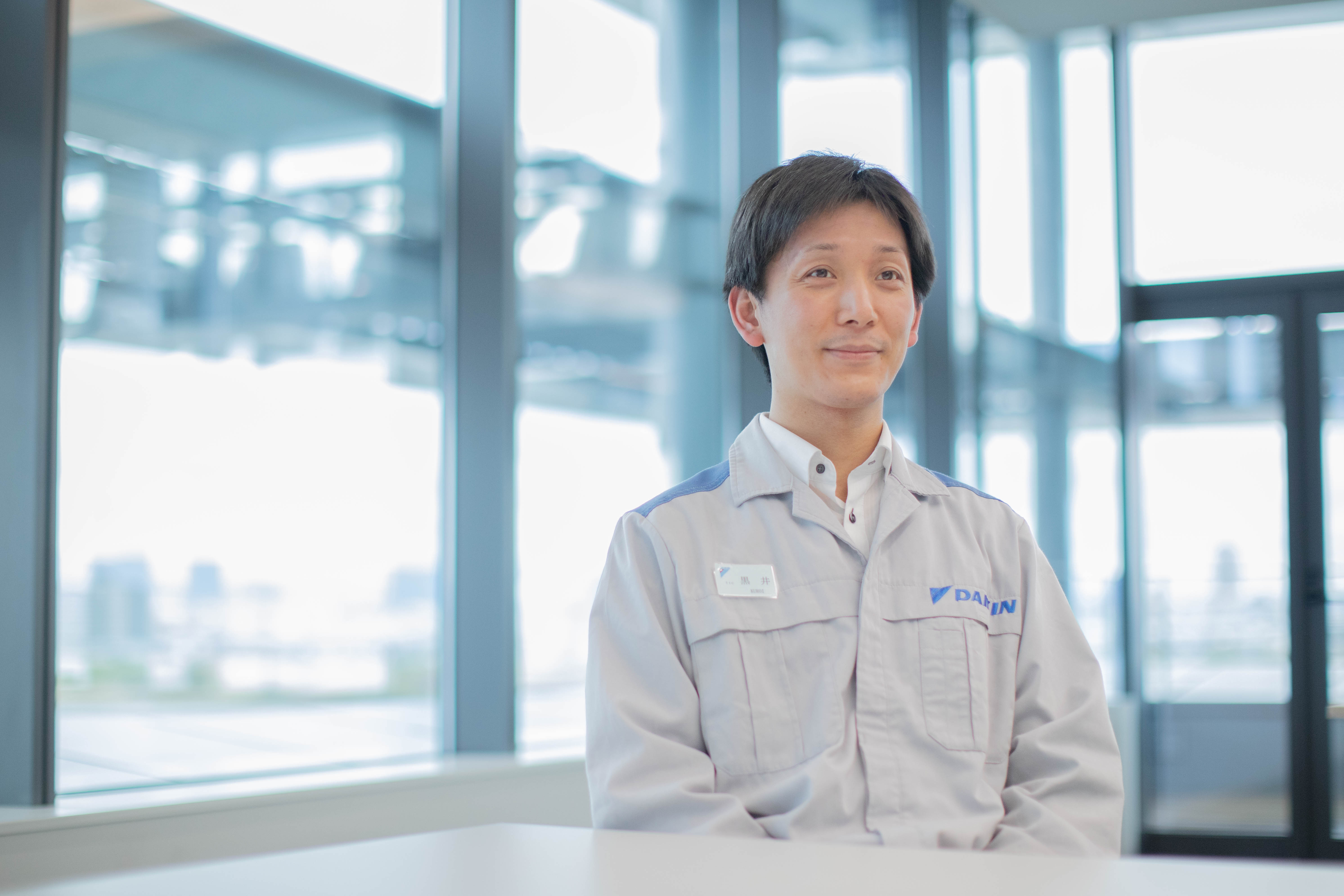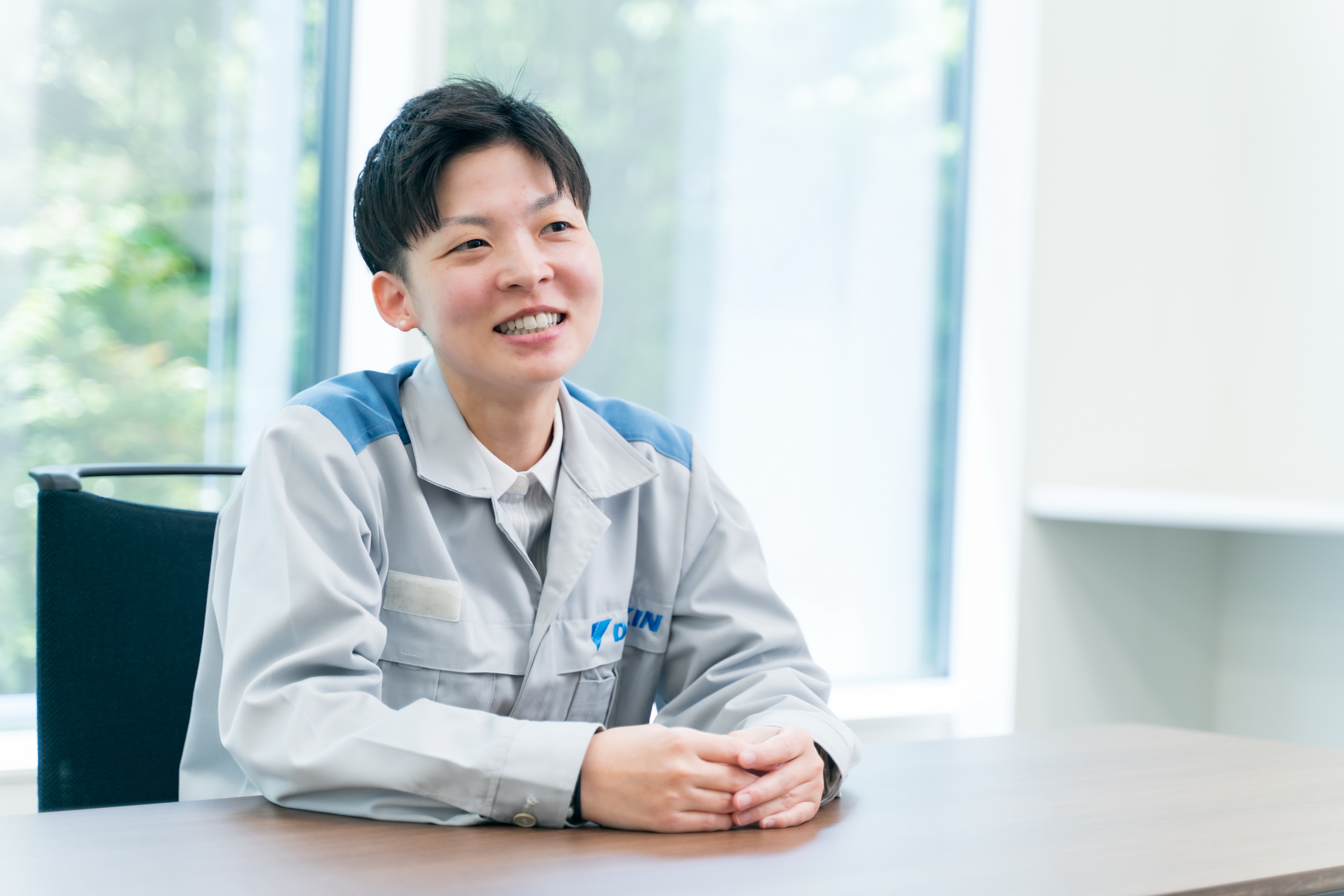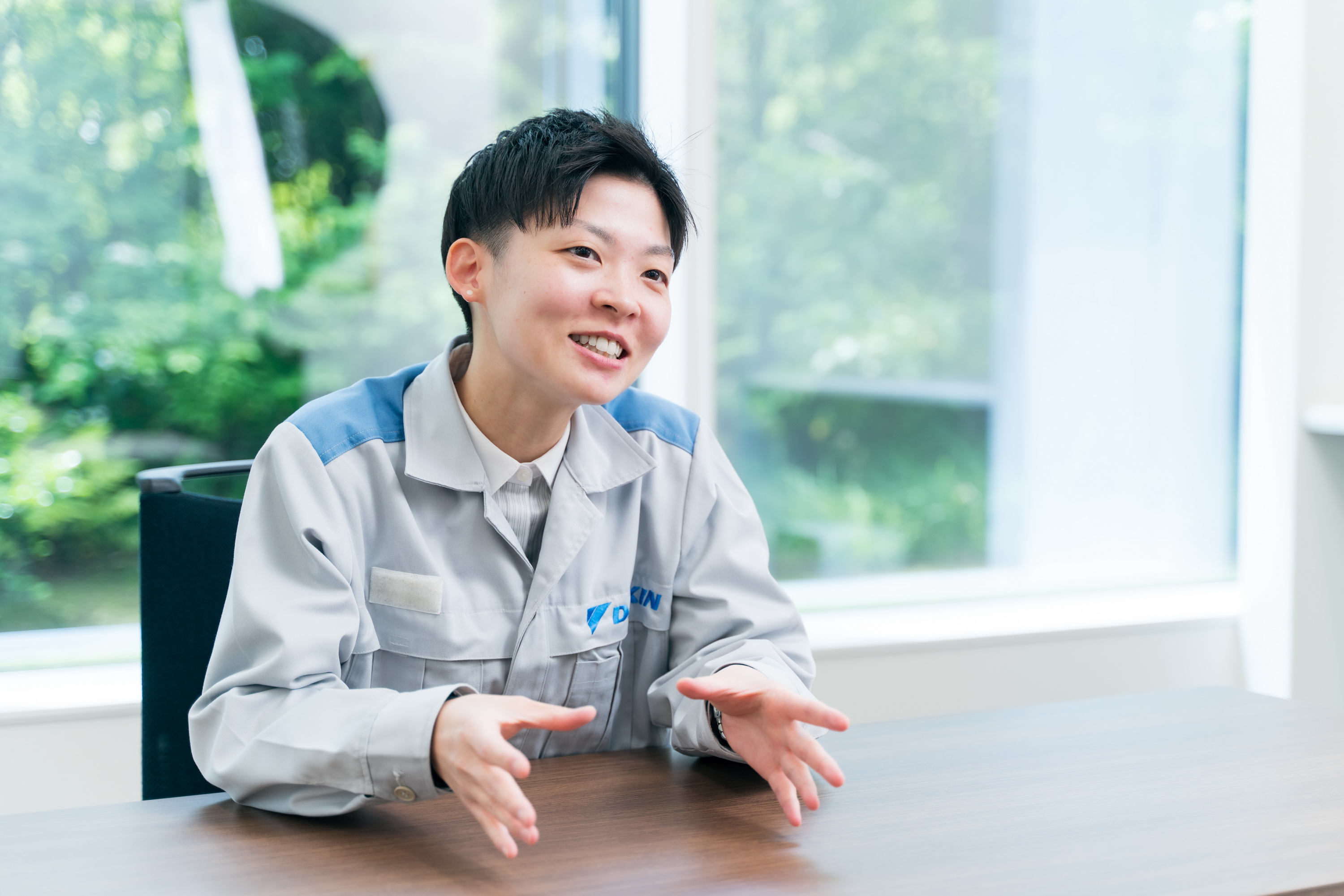After joining the company, I was assigned to the Product R&D Department at the Shiga Plant. Since my academic background was in biology, I lacked mechanical design knowledge, so I spent my first year systematically studying the fundamentals of design. From there, I was transferred to my current position at the Technology and Innovation Center (TIC), where I have been involved in a wide range of technology development related to indoor air quality (IAQ). This work includes the development of biosensors, technical research for new businesses related to health, and the creation of air purification technology using scents. Most recently, I have begun research in the field of disinfection, which is the current theme.
NEWS
Development Start of New Air Purification Technologies in Response to COVID-19
Koyama: The outbreak of the novel coronavirus and surge in demand for new air purification solutions served as the stimulus. Daikin already possessed its unique 'Streamer technology*' as a disinfection measure, so a project was initiated to develop UV disinfection technology to complement and enhance its effectiveness. I became involved in the research and development of a new air purification technology that would incorporate all aspects of reliability, immediate effect, and disinfection safety.
To promptly meet the growing market needs from the COVID-19 pandemic, rapid technology development and product delivery were essential. Therefore, TIC collaborated with the Air Conditioning Manufacturing Division, which is responsible for product development. Project objectives not only included establishment of UV technology but also the creation of design standards that could extend application of the technology to other products.
※Streamer technology: A type of plasma discharge in which the electrons generated from Streamer discharge combine with oxygen and nitrogen in the air. This technology utilizes its effective oxidative power to suppress mold, mites, pollen, formaldehyde, and other substances in the air.
Air Purifier with UV-LED Integration for Synergy with Conventional Technologies
Koyama: Although disinfection technology is a broad term, it encompasses various elemental technologies. A key point for differentiating our products was keeping the Streamer and UV technologies separate. Since air purifiers also include filters, we aimed to combine these technologies efficiently to inactivate viruses in the air.
The UV-LED air purifier first captures viruses and harmful substances in the air through a filter, and then irradiates them with UV to inactivate the collected viruses. The UV light irradiation destroys the genetic information of the viruses, allowing for faster and more reliable inactivation than conventional methods. Our company has chosen to utilize UVC LEDs with a wavelength near 265nm, which is considered to have a higher destructive effect on DNA and RNA.
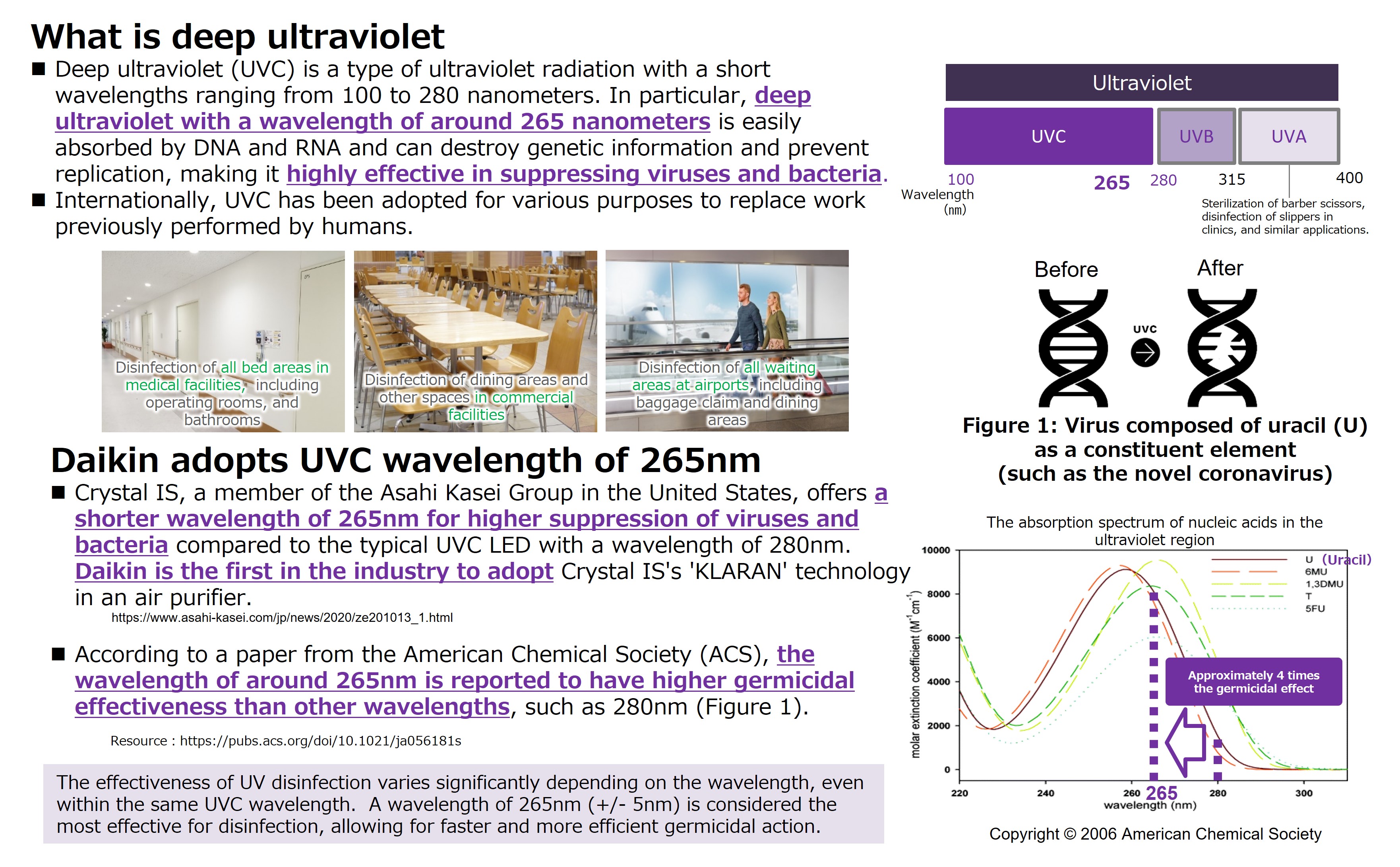
Layout Design and Safety Verification for New UV Irradiation Compatible Filters
Koyama: Conventional air purifiers employ high-efficiency particulate air (HEPA) filters capable of capturing particles as small as 0.3μm at an efficiency of over 99.97%. However, due to their pleated shape, certain areas of the filter could not be irradiated with UV light. To address this, a dedicated UV filter has been newly positioned over the HEPA filter, enabling the suppression of captured viruses by over 99% within 30 minutes. Additionally, leveraging our unique Streamer technology, we can excite oxygen and nitrogen in the air, transporting these molecules to the HEPA filter. This ensures that, similar to conventional methods, the HEPA filter can effectively inactivate bacteria, pollen, and other substances.
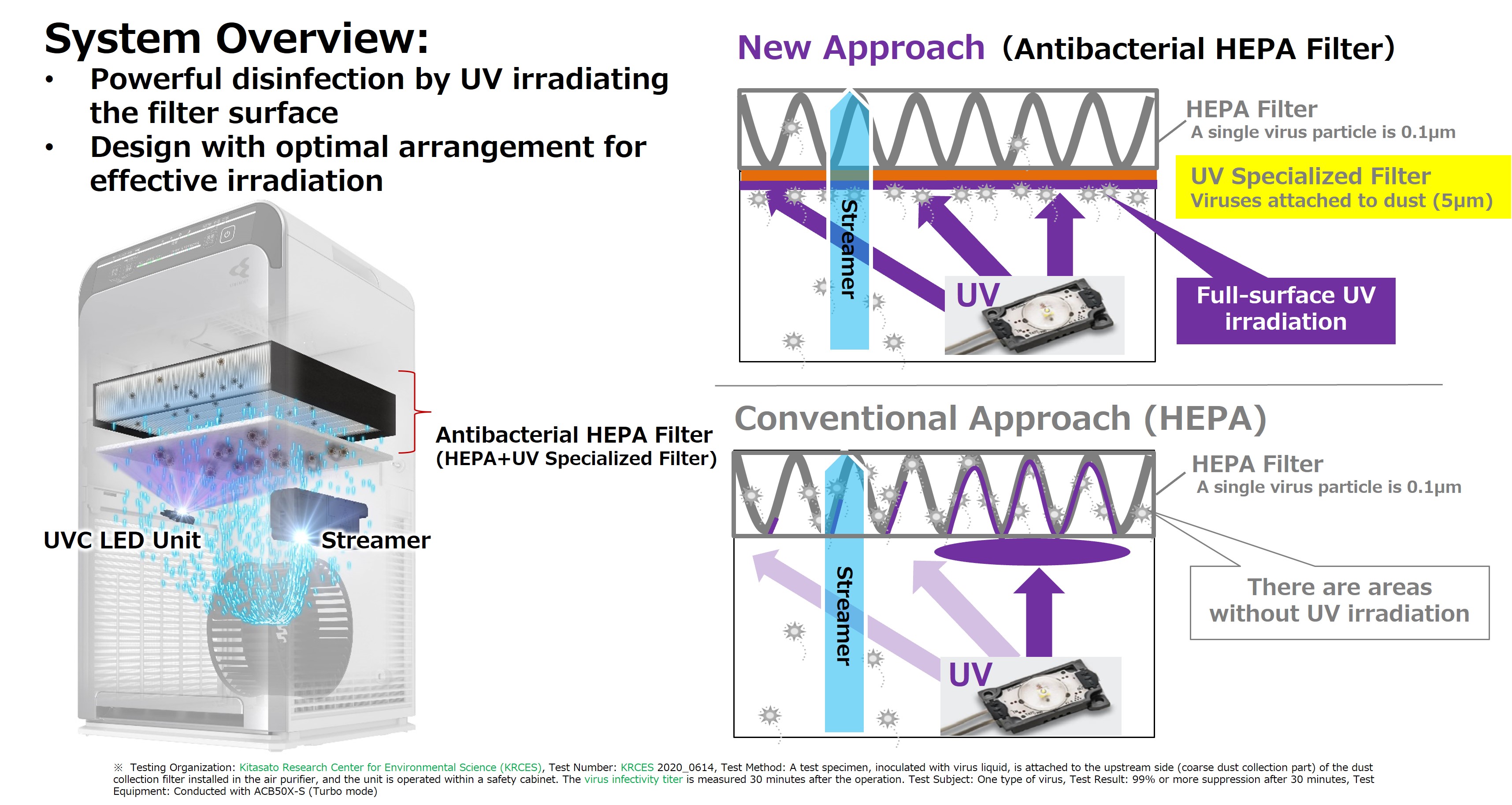
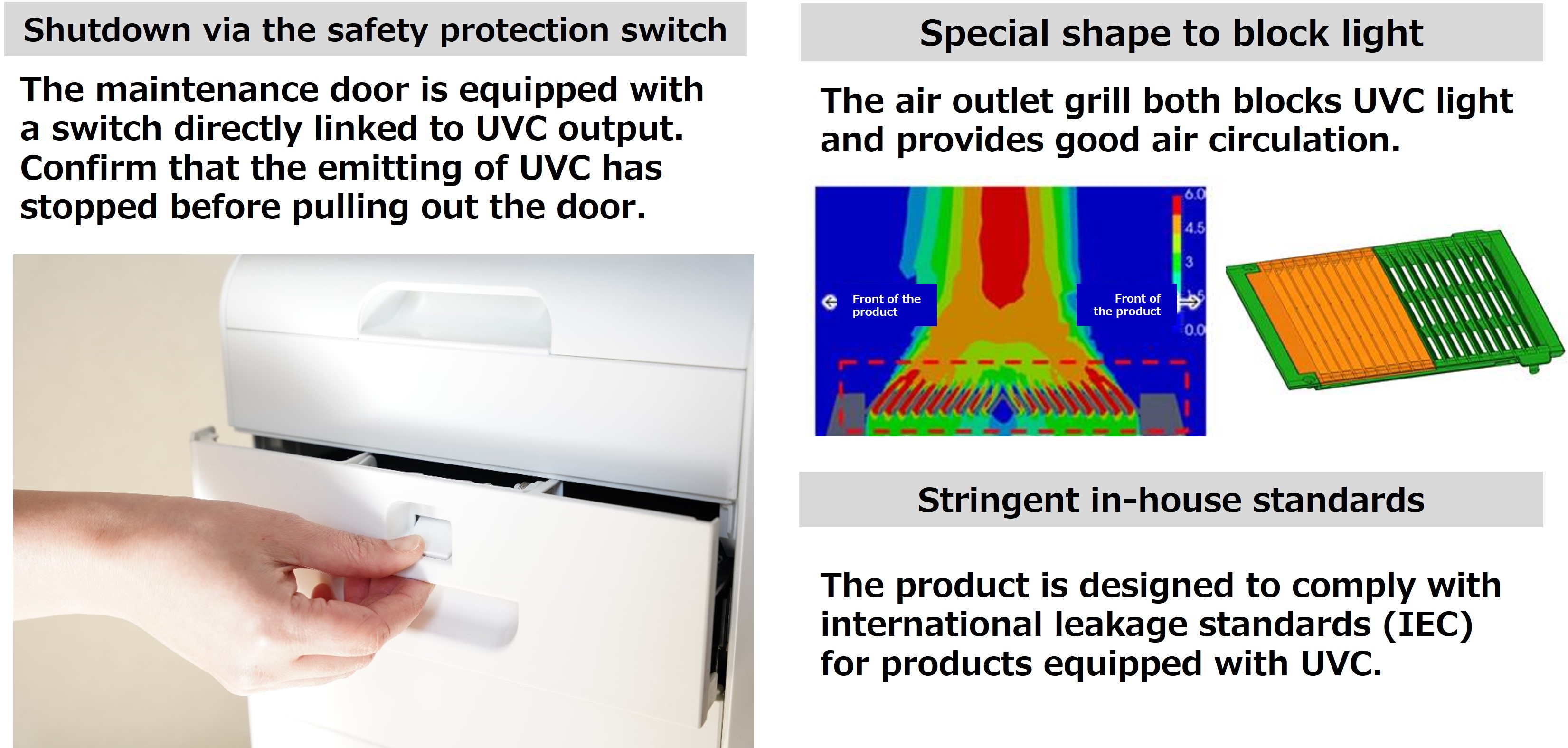
Koyama: UV light is invisible to the human eye, and verifying its effectiveness for inactivating viruses in real time is challenging. To substantiate specific effects, we struggled to conduct tests and establish evaluation criteria. In utilizing UV, we investigated existing standards in the world to formulate guidelines for creating new design standards. Regarding safety, accurately measuring invisible light posed challenges. Through the creation of dedicated fixtures and repetitive experiments, we developed stringent criteria that could confidently attest to safety. During that time, the COVID-19 pandemic led to the declaration of a state of emergency, imposing strict limits on office attendance and business trips. Despite these restrictions, we diligently adhered to infection prevention measures and conducted experiments and evaluations at external testing facilities. Looking back, it was job where you had to get your hands dirty. (laughs).
Even now, I’m currently involved in UV technology development, and each day is a learning experience. Many times we are using equipment for the first time, requiring careful consideration, including handling. For instance, we considered factors such as heat generation and the directionality of light and carefully determined the test positions to meet the desired conditions.
Developing Safer High-Performance UV Disinfection Technologies and Aiming for a Broad Product Portfolio
Koyama: The UV technology established in this development is currently applicable to a limited range of products and models. We aim to expand its use not only in air purifiers but also in various other products. Ensuring user safety remains our top priority. Technologies such as safety design for different product structures and the visualization of UV are crucial. However, simulations provide results based solely on theoretical calculations, making it impossible to ascertain the accurate situation in real devices. We are actively exploring how to effectively utilize UV-LED technology to solve these issues.
At the same time, we are working on further enhancing the disinfection performance. We are developing a safe and efficient disinfection technology that minimizes the waste of ultraviolet rays emitted from UV-LED, aiming to establish elemental technologies that can be applied to a wider range of products.
Koyama: At TIC, we have a diverse group of experts in various technical fields. When I joined the company, I had no knowledge of mechanical or electrical engineering, and I felt completely lost. However, I learned from my senior colleagues and received their support, which has led me to where I am today. Conversely, I also find it to be a rewarding work environment where people can rely upon me in my area of expertise.
Moreover, rather than having simply a top-down relationship, Daikin embraces the keywords of 'Flat & Fast,' and fosters a culture where one can freely and equally communicate 'what they want to do.' In my current role of working in a technology field called optics with no prior experience, there are many things I don't know and challenges to overcome. However, I appreciate the freedom to convey my thoughts regardless of my position and the excitement of collaborating with everyone to create new technologies. For those considering joining Daikin, I encourage you to challenge yourself in various ways, free from the constraints of your academic or professional background, and strive to bring your ideas to life.
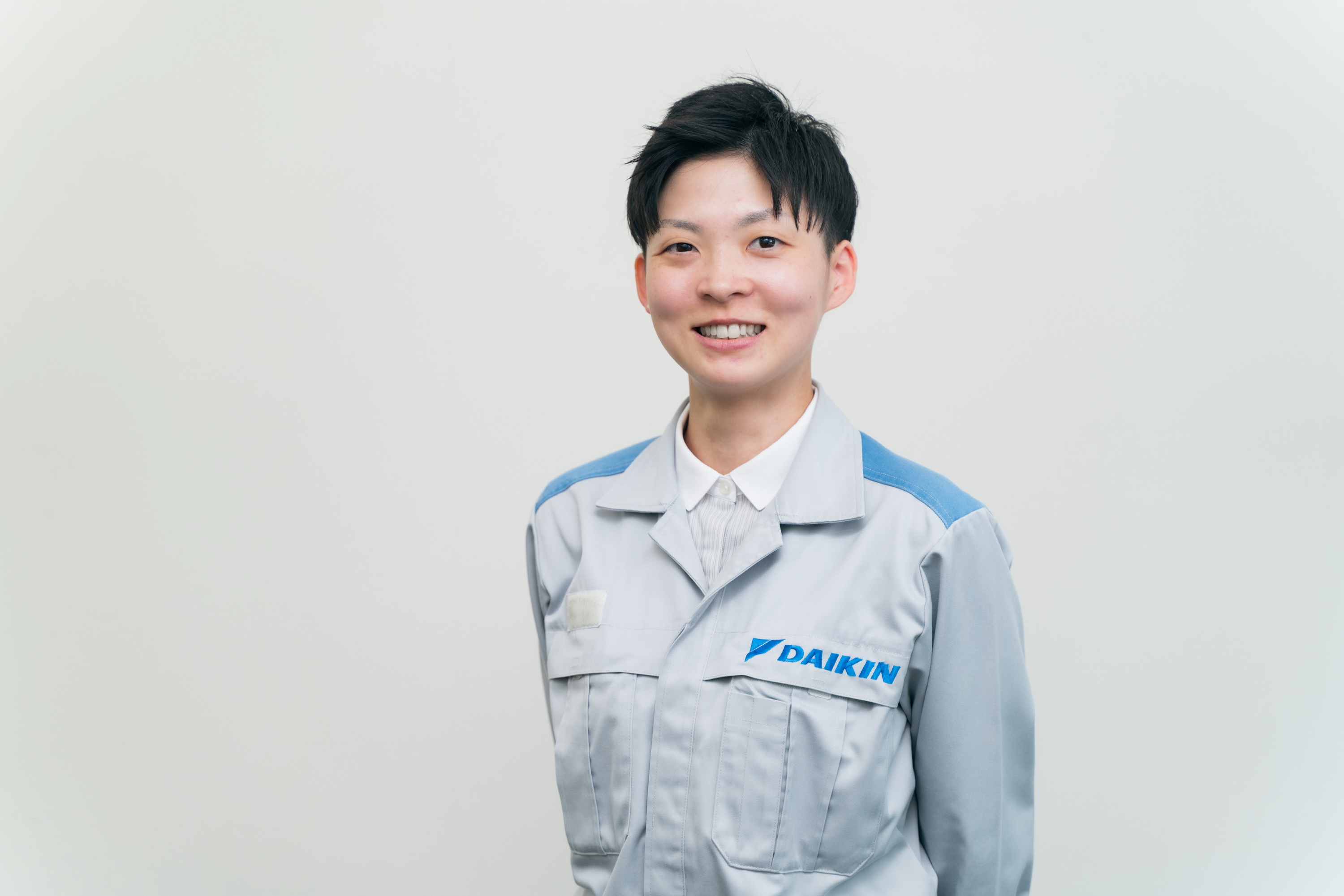
Technology and Innovation Center
Joined in April 2015. Originally from Hyogo Prefecture.
She is responsible for developing elemental technologies in the disinfection field.
“I aspire to create an original air purification technology that doesn't exist yet and provide people worldwide with a secure and safe environment.”
